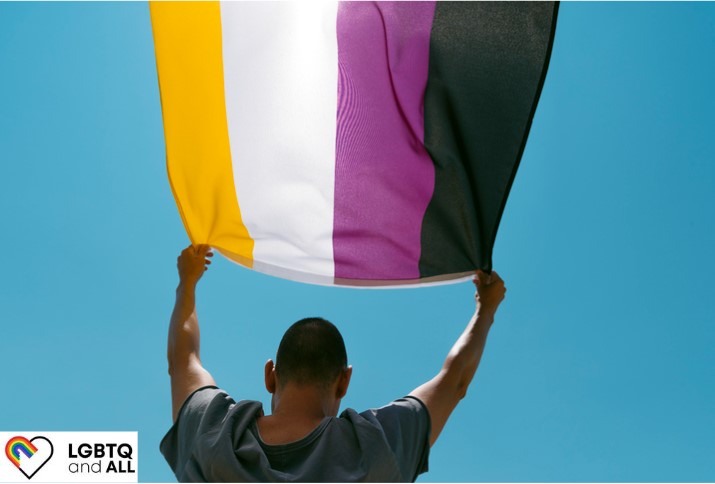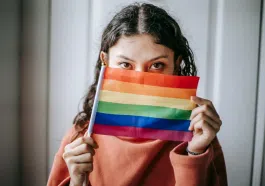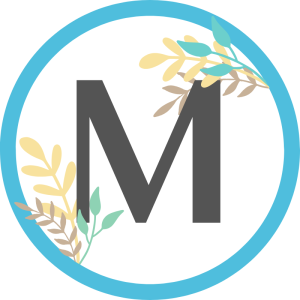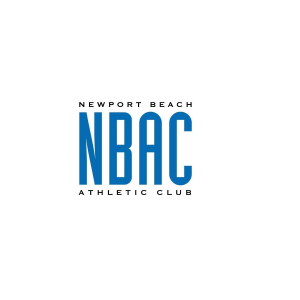The Non Binary Flag represents the non binary community and its diversity. It is a symbol of inclusion, acceptance, and pride for non binary people. This blog post will explore the history of the non binary flag and the meaning behind the colors and symbols it displays.
What is non binary identity?
It is common for most people – including transgender individuals – to identify as male or female. However, some people don’t fit perfectly into categories of “man” or “woman,” or “male” or “female.” For example, some people have a gender that is both male and female. There are some people who do not identify with any gender. Gender can change over time for some people.
Many different terms are used to describe people who don’t identify as male or female, but non binary is one of the most common (sometimes spelled with a hyphen or as one word, as “non-binary”). Genderqueer, agender, bigender, genderfluid, and more terms are also used. While none of these terms mean exactly the same thing, they all refer to an experience of gender that goes beyond male or female. Usually, you can ask politely what a word means if you are unsure what it means.
What is the Non binary Flag?
The non binary flag is a symbol used to represent individuals who do not identify strictly as male or female. It serves as a visual representation of the non-binary community and their struggle for recognition and acceptance. The flag consists of three horizontal stripes of equal width. The top stripe is yellow, symbolizing non-binary people who identify outside the traditional gender binary. The middle stripe is white, representing those who identify as having a neutral or undefined gender. The bottom stripe is purple, signifying non-binary individuals who have a combination of both male and female gender identities.
When was the flag designed?
The flag was designed by Kye Rowan in 2014 and was first flown at the LGBT Pride Parade in 2014. Since then, it has gained popularity and is now widely recognized as a symbol of the non-binary community. The design and colors of the flag were carefully chosen to reflect the diversity and complexity of gender identities that fall outside the binary norm.
What does the Non binary Flag symbolize?
The yellow stripe represents those who identify as neither exclusively male nor female. It represents non-binary individuals who may identify as genderqueer, genderfluid, or agender. The color yellow is often associated with brightness, energy, and optimism, symbolizing the vibrant and diverse nature of non-binary identities.
The white stripe represents those who identify as having a neutral or undefined gender. It represents non-binary individuals who may identify as genderless, neutrois, or non-gendered. The color white is often associated with purity, innocence, and neutrality, symbolizing the absence of gender or the blending of genders.
The purple stripe represents those who have a combination of both male and female gender identities. It represents non-binary individuals who may identify as bigender, androgynous, or two-spirit. The color purple is often associated with creativity, spirituality, and transformation, symbolizing the blending and merging of male and female energies.
What are some other LGBTQ+ flags?
Rainbow Flag
The iconic Pride Rainbow flag was created in 1978 by Gilbert Baker. Among the colors represented were pink for sexuality, red for healing, yellow for sun, green for serenity with nature, turquoise for art, indigo for harmony, and violet for spirit. Since then, the flag has been reduced to six colors: pink has been replaced by royal blue and turquoise with indigo.
Progress Pride Flag
Daniel Quasar created the Progress Pride flag in 2018 based on the iconic rainbow flag from 1978. Diversity and inclusion are reflected in the design, with black, brown, and blue stripes representing marginalized LGBTIQ+ people of color. In addition, the black stripe honors the thousands of individuals who died during the HIV/AIDS crisis in the 1980s and 1990s as well as the communities of color represented by black and brown stripes. Since its creation, the flag has become very popular. The flag has gained a lot of popularity since its creation.
Philadelphia Pride Flag
Philadelphia’s Pride Flag was officially unveiled during the 2017 event. As part of their efforts to incorporate queer communities of color that have been ignored in the mainstream LGBTQ+ movement, the Philadelphia City Council commissioned this flag. It is symbolic of the movement’s contribution to communities of color that black and brown stripes have been added.
Intersex-Inclusive Progress Pride Flag
Intersex-Inclusive Progress Pride Flags embrace the intersex community. It is the most up-to-date LGBTQ+ flag. Valentino Vecchietti of Intersex Equality Rights UK designed the flag.
Queer Pride Flag
Although the Queer Pride Flag may not be as well known, it is an important symbol. The flag, which was created in 2015, now symbolizes all aspects of queerness as the word ‘queer’ has become more celebrated. A pink and blue shade represents same-gender attraction, while orange and green represent non-binary or non-conforming individuals. Symbolizing agender, asexual, and aromantic communities, the black and white stripes are black and white.
Takeaway
The non-binary flag is a powerful symbol of visibility and pride for the non-binary community. It is a reminder that gender exists on a spectrum and that many diverse identities fall outside the traditional binary. By displaying and recognizing the non-binary flag, we can support and accept non-binary individuals and promote inclusivity and equality for all.
For more content about LGBTQ+ identities and news, follow our Lifestyle Guide at LGBTQ and ALL.















